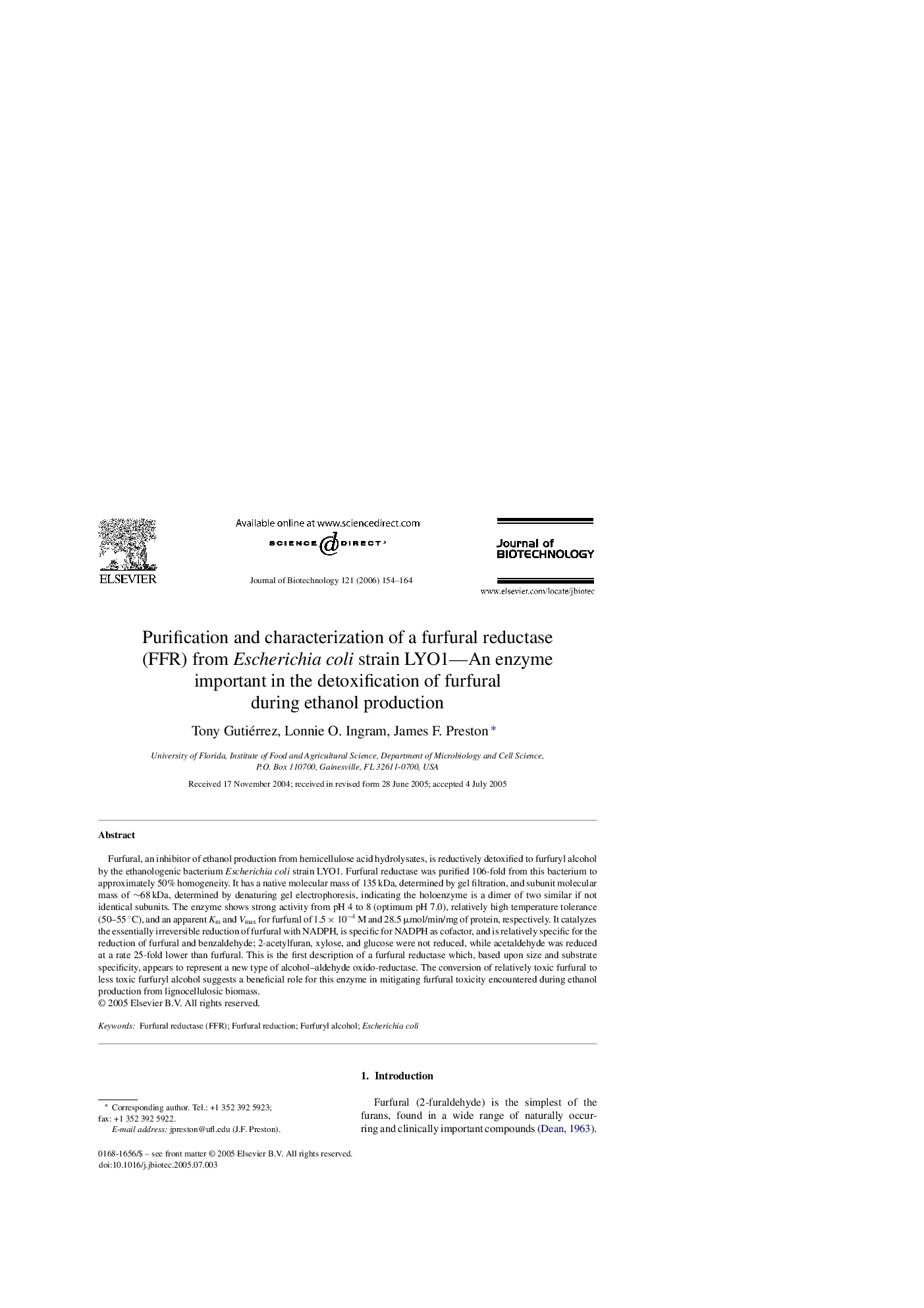| Article ID | Journal | Published Year | Pages | File Type |
|---|---|---|---|---|
| 25728 | Journal of Biotechnology | 2006 | 11 Pages |
Furfural, an inhibitor of ethanol production from hemicellulose acid hydrolysates, is reductively detoxified to furfuryl alcohol by the ethanologenic bacterium Escherichia coli strain LYO1. Furfural reductase was purified 106-fold from this bacterium to approximately 50% homogeneity. It has a native molecular mass of 135 kDa, determined by gel filtration, and subunit molecular mass of ∼68 kDa, determined by denaturing gel electrophoresis, indicating the holoenzyme is a dimer of two similar if not identical subunits. The enzyme shows strong activity from pH 4 to 8 (optimum pH 7.0), relatively high temperature tolerance (50–55 °C), and an apparent Km and Vmax for furfural of 1.5 × 10−4 M and 28.5 μmol/min/mg of protein, respectively. It catalyzes the essentially irreversible reduction of furfural with NADPH, is specific for NADPH as cofactor, and is relatively specific for the reduction of furfural and benzaldehyde; 2-acetylfuran, xylose, and glucose were not reduced, while acetaldehyde was reduced at a rate 25-fold lower than furfural. This is the first description of a furfural reductase which, based upon size and substrate specificity, appears to represent a new type of alcohol–aldehyde oxido-reductase. The conversion of relatively toxic furfural to less toxic furfuryl alcohol suggests a beneficial role for this enzyme in mitigating furfural toxicity encountered during ethanol production from lignocellulosic biomass.
